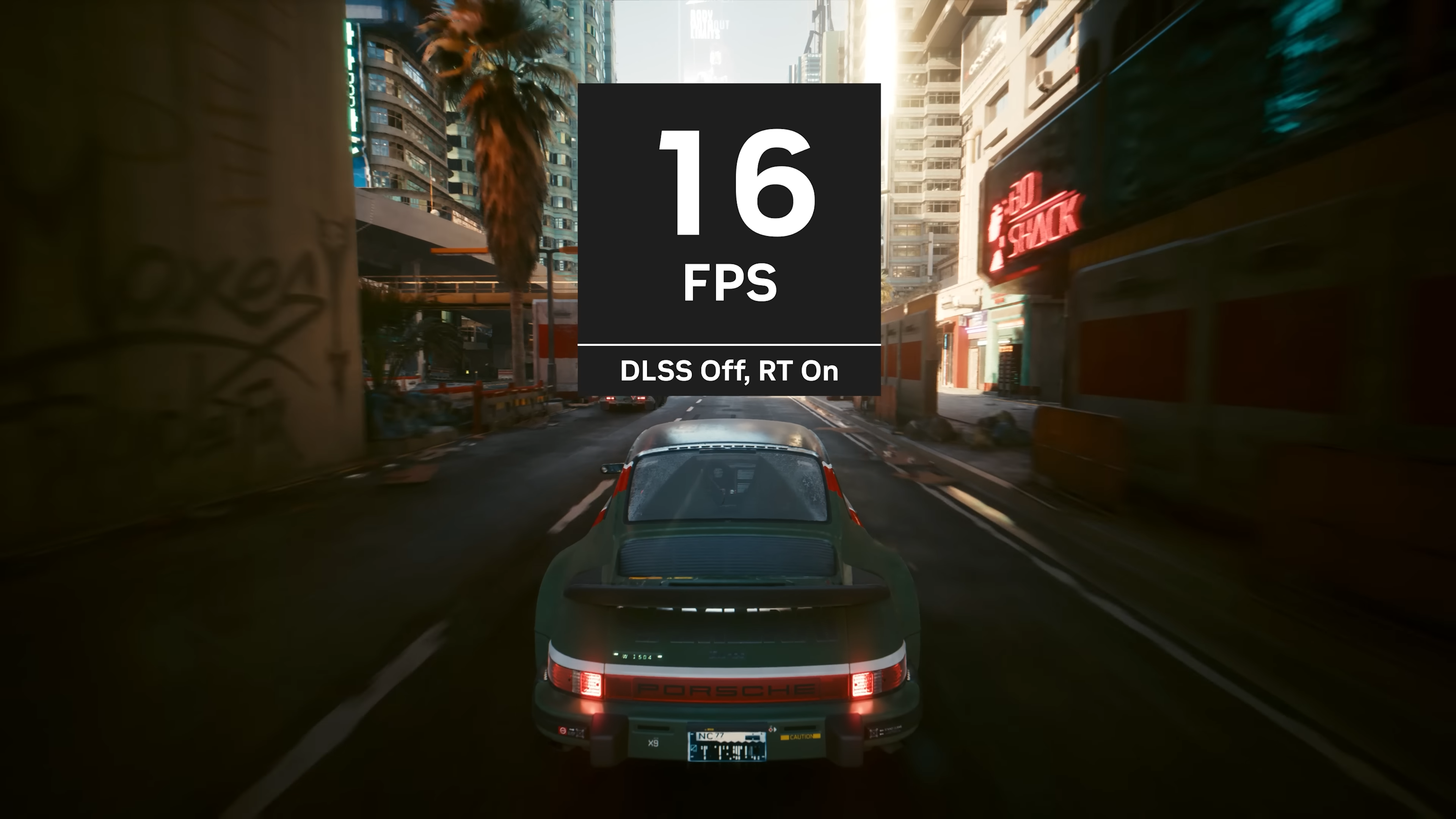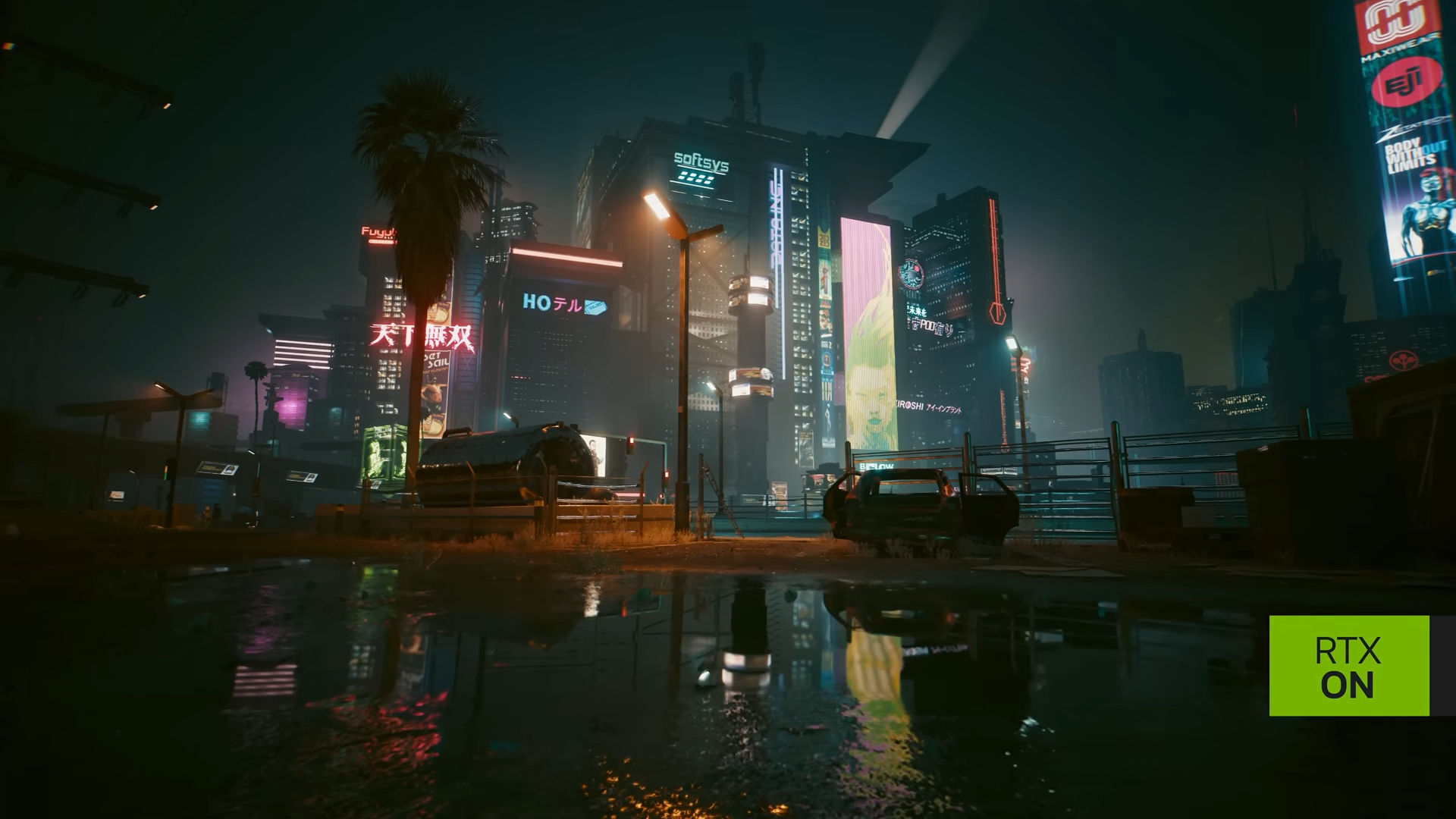
Nvidia published a new YouTube video this morning showing Cyberpunk 2077's new RT Overdrive mode in action with a GeForce RTX 4090, along with a breakdown of the changes. The graphics are incredible, but so is the performance hit on the RTX 4090. The fully path-traced renderer brought the RTX 4090 to a snail's pace and ran the game at just 16 FPS natively with the mode active. To achieve favorable frame rates, DLSS 3's frame generation and upscaling were required. But let's take a moment to step back and dissect precisely what we're talking about here.
RT Overdrive mode is a brand-new rendering mode being added to Cyberpunk 2077 on April 11th. The new graphics mode replaces the game's current ray-tracing pipeline with a fully unified path-tracing solution that significantly expands the game's rendering engine. There's no hybrid rendering, only ray traced pixels. Nvidia has previously demonstrated this mode, and it notes that on average it needs 635 ray calculations per pixel — compared to just 39 rays per pixel with Battlefield V, one of the original launch games for RTX ray tracing.
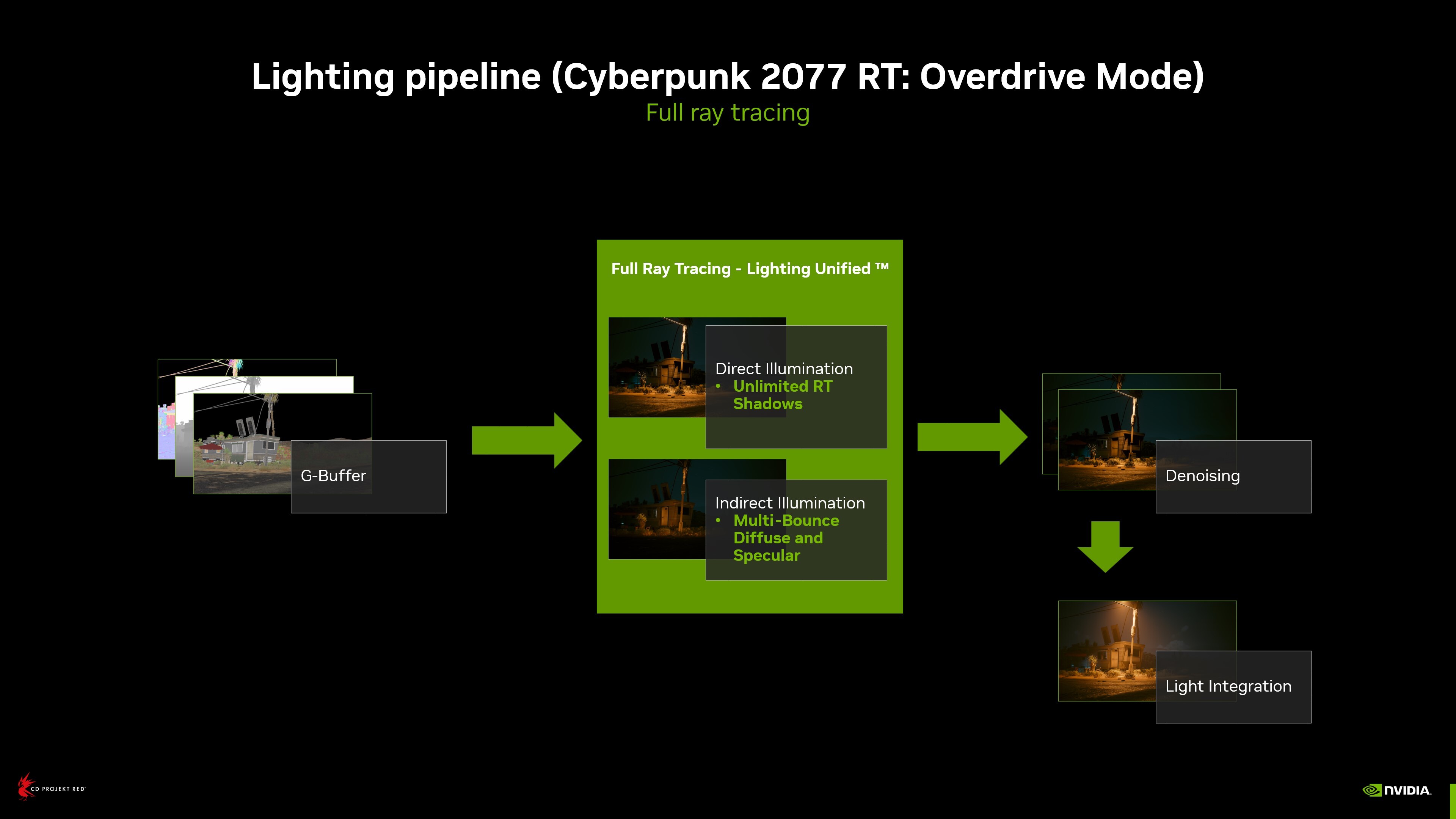
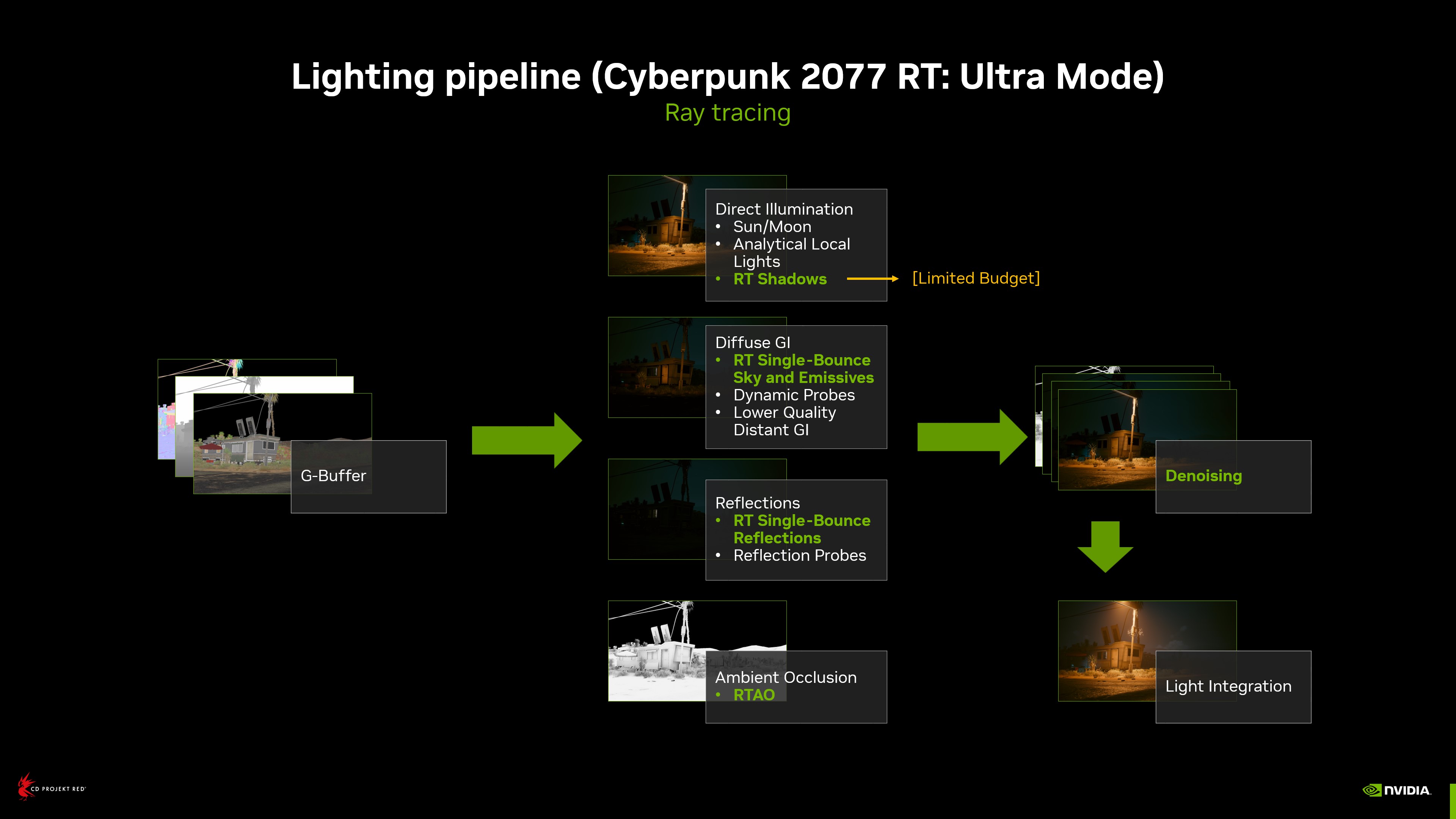
The regular ray tracing modes in Cyberpunk 2077 were a hybrid rendering solution, consisting of rasterization in combination with ray-traced reflections, global illumination, and other effects. With the fully path-traced solution, every single light source in the game is simulated to generate the most realistic lighting, shadows, and reflections possible.
All light sources in the game are path-traced, in conjunction with Nvidia technologies including NVIDIA Real-Time Denoisers (NRD), NVIDIA RTX Direct Illumination (RTXDI), and Shader Execution Reordering (SER) to improve image quality and accelerate performance. It's basically the same overhaul that Nvidia did with Portal RTX, only now applied to a significantly more modern and demanding game engine.
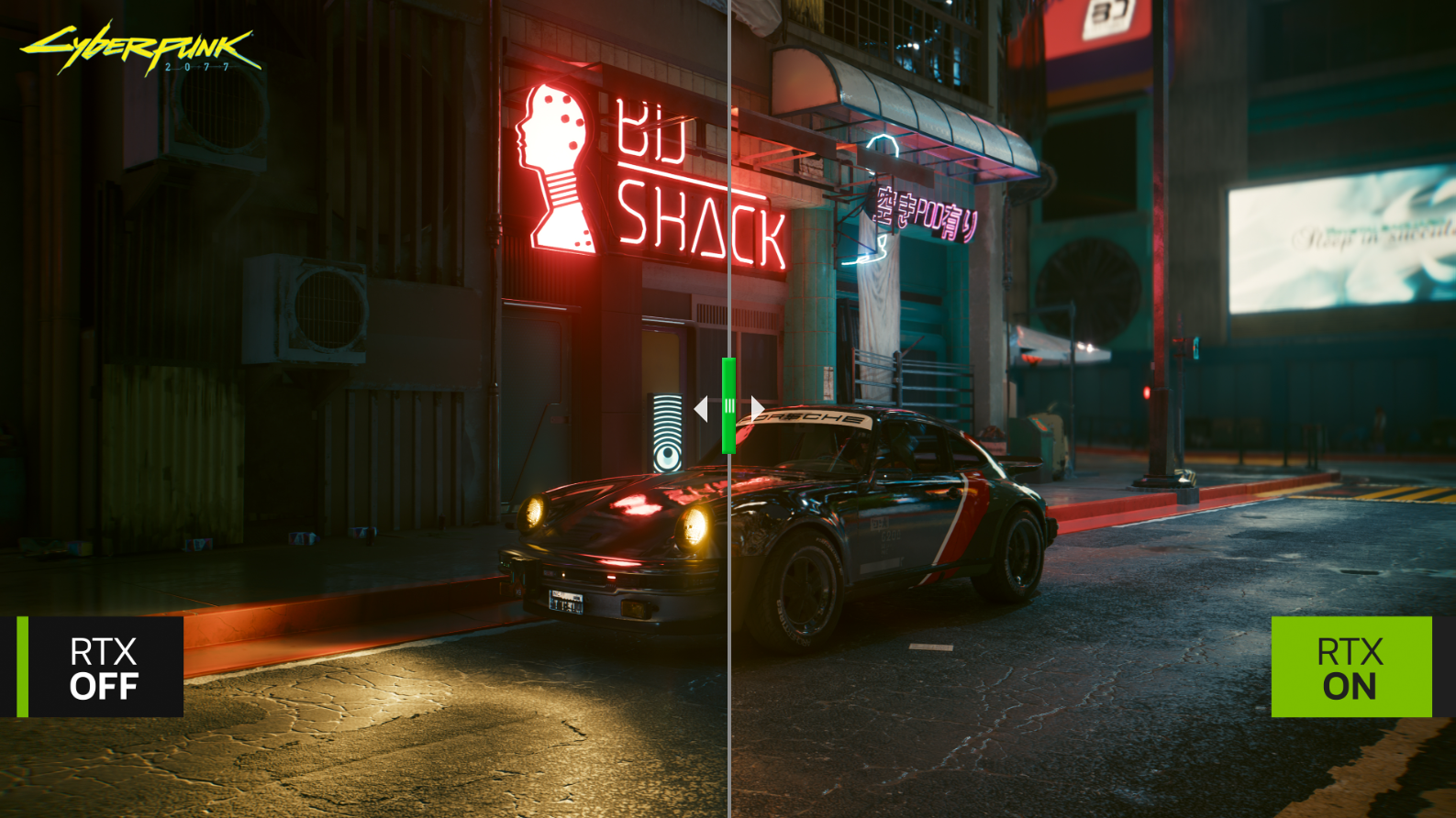
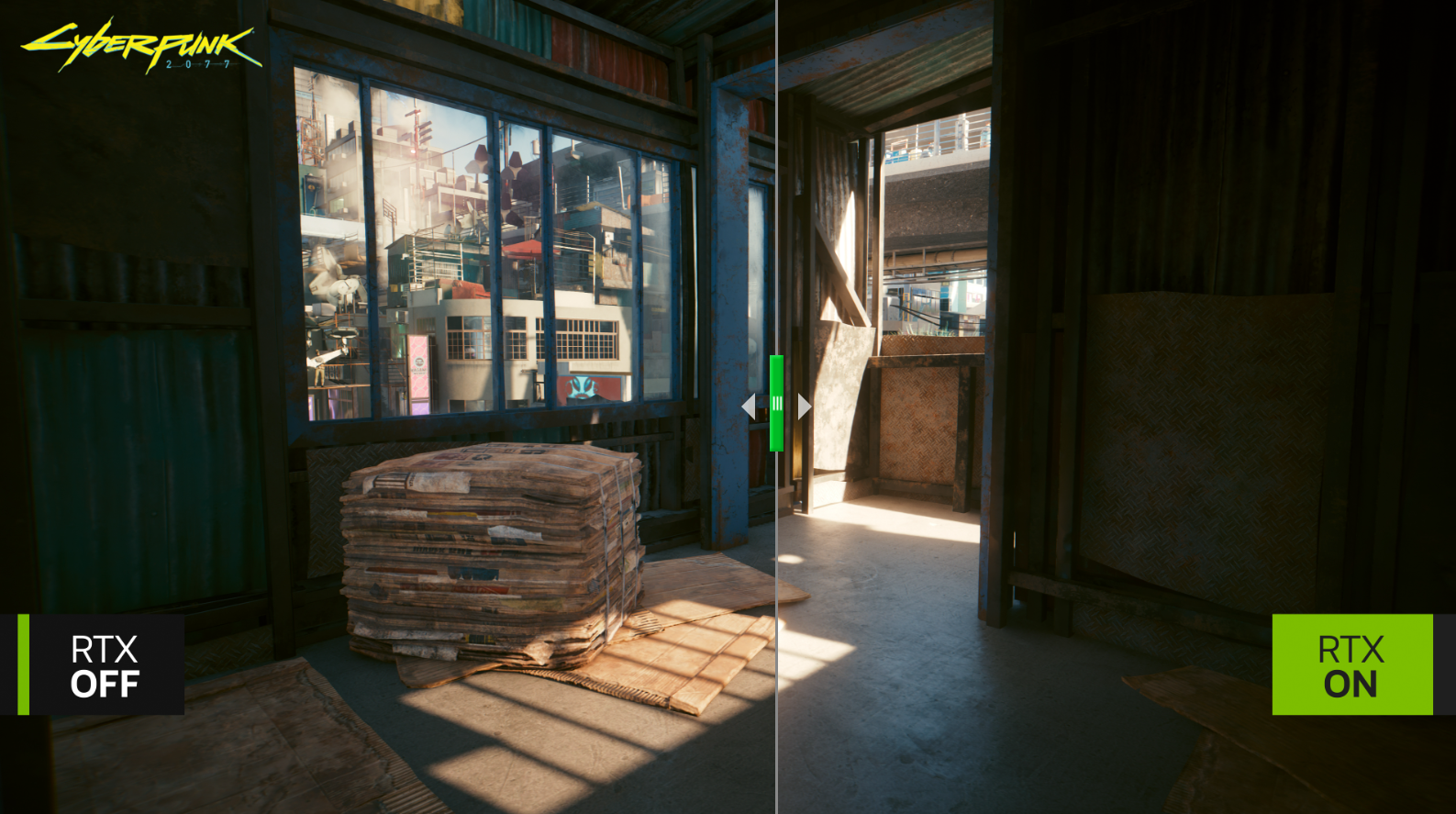
Overdrive is the new Crysis
Nvidia's YouTube video demonstrates the absurd performance penalty of running a AAA title like Cyberpunk 2077 with full-blown path tracing enabled. Nvidia used a GeForce RTX 4090 to run the Overdrive tech demo at 4K resolution, and the GPU couldn't even hit 30FPS at native resolution.
To achieve playable frame rates, Nvidia used DLSS 3 frame generation in combination with image upscaling (DLSS 2 Performance mode) to get frame rates back into the triple digits. This is similar to Portal RTX — another fully path-traced game, where the RTX 4090 also needed DLSS 3 frame generation and/or upscaling to achieve playable frame rates.
This should put into perspective how much more demanding 3D light simulation is compared to just faking it. But thankfully, we're now at the point where good quality light simulation can be done in real-time, even if it still generally needs upscaling to get to decent frame rates.
We don't know the system requirements yet for this new Overdrive mode, but its safe to say you'll probably need a top-tier RTX 30-series GPU, or one of Nvidia's RTX 40-series GPUs, to run Overdrive mode at high frame rates. Considering Nvidia was running at 4K, you can probably get decent performance at 1080p with far less potent GPUs than the RTX 4090, and Cyberpunk 2077 does support both DLSS 2 and AMD FSR 2.1 upscaling.
We'll have to see what performance looks like on other GPUs when the free update arrives on April 11.
